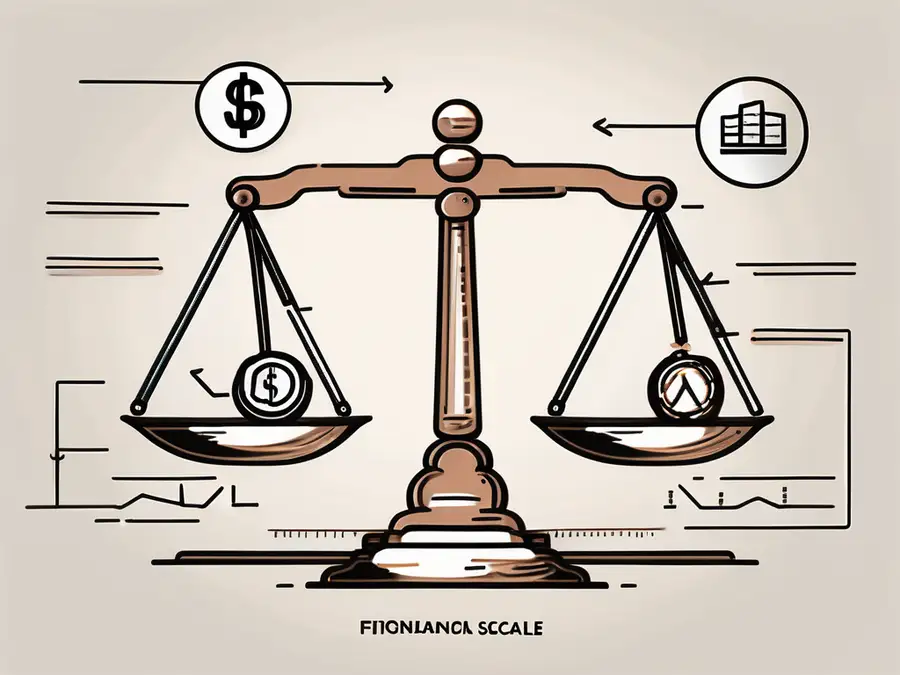The Importance of Ratio Analysis in Financial Evaluation

As an expert in financial evaluation, I cannot stress enough the importance of ratio analysis. It is an indispensable tool that provides crucial insights into a company's financial health and performance. By examining various financial ratios, analysts are able to assess liquidity, profitability, efficiency, and market prospects, which are all key indicators of a company's overall financial well-being.
Understanding Ratio Analysis
Ratio analysis is a method of evaluating a company's financial performance by comparing different ratios derived from its financial statements. These ratios reflect the relationship between various financial data points and provide meaningful insights into the company's operational efficiency, profitability, and ability to meet its financial obligations.
Ratio analysis is a crucial tool used by investors, creditors, and managers to assess the financial health of a company. By examining the ratios, they can gain a deeper understanding of the company's strengths and weaknesses, allowing them to make informed decisions.
When conducting ratio analysis, several key components are considered. These components provide a comprehensive view of the company's financial status and help in evaluating its overall performance.
Definition of Ratio Analysis
Ratio analysis is a quantitative technique that involves the calculation and interpretation of key financial ratios. These ratios are derived from the company's financial statements, such as the balance sheet, income statement, and cash flow statement. By analyzing these ratios, investors and managers can gain valuable insights into the company's financial performance.
Liquidity ratios are one of the key components of ratio analysis. These ratios assess a company's ability to meet its short-term obligations. They provide an indication of the company's liquidity position and its ability to cover its immediate financial needs. Common liquidity ratios include the current ratio and the quick ratio.
Profitability ratios are another important aspect of ratio analysis. These ratios measure the company's ability to generate profits from its operations. They provide insights into the company's profitability, efficiency, and effectiveness in utilizing its resources. Common profitability ratios include the gross profit margin, net profit margin, and return on assets.
Efficiency ratios are also considered in ratio analysis. These ratios evaluate the company's efficiency in utilizing its resources, such as assets and inventory. They provide insights into the company's operational efficiency and its ability to generate sales. Common efficiency ratios include the asset turnover ratio and inventory turnover ratio.
Market prospect ratios are the final component of ratio analysis. These ratios assess the company's market position and potential for growth. They provide insights into the company's attractiveness to investors and its ability to generate future returns. Common market prospect ratios include the price-earnings ratio and the earnings per share.
Key Components of Ratio Analysis
Ratio analysis comprises several key components that shed light on different aspects of a company's financial status. Liquidity ratios assess a company's ability to meet its short-term obligations, ensuring that it has enough cash and assets that can be easily converted into cash. These ratios include the current ratio, which measures the company's ability to cover its short-term liabilities with its short-term assets, and the quick ratio, which measures the company's ability to cover its short-term liabilities with its most liquid assets.
Profitability ratios gauge a company's ability to generate profits from its operations. These ratios provide insights into the company's efficiency in managing its costs, generating revenues, and maximizing its profitability. Common profitability ratios include the gross profit margin, which measures the company's ability to generate profits after deducting the cost of goods sold, and the net profit margin, which measures the company's ability to generate profits after deducting all expenses.
Efficiency ratios measure the effectiveness of a company's resource utilization. These ratios assess how well the company utilizes its assets, inventory, and other resources to generate sales and profits. Common efficiency ratios include the asset turnover ratio, which measures the company's ability to generate sales from its total assets, and the inventory turnover ratio, which measures the company's ability to sell its inventory within a specific period.
Market prospect ratios evaluate a company's market position and potential for growth. These ratios provide insights into the company's attractiveness to investors and its ability to generate future returns. Common market prospect ratios include the price-earnings ratio, which compares the company's stock price to its earnings per share, and the earnings per share, which measures the company's profitability on a per-share basis.
By analyzing these key components of ratio analysis, investors, creditors, and managers can gain a comprehensive understanding of a company's financial performance. This knowledge enables them to make informed decisions about investing in the company, extending credit, or managing its operations effectively.
Types of Ratio Analysis in Finance
Ratio analysis encompasses various types of ratios that cover different dimensions of a company's financial performance. Let's delve into the main types:
Liquidity Ratios
Liquidity ratios indicate a company's ability to meet its short-term financial obligations. By analyzing these ratios, such as the current ratio and the quick ratio, investors and creditors gain insight into a company's short-term solvency.
For example, the current ratio is calculated by dividing a company's current assets by its current liabilities. This ratio provides an indication of whether a company has enough assets to cover its short-term liabilities. A higher current ratio is generally considered favorable, as it suggests that a company has sufficient liquidity to meet its obligations.
Similarly, the quick ratio, also known as the acid-test ratio, measures a company's ability to pay off its current liabilities using its most liquid assets. It excludes inventory from current assets since inventory may not be easily converted into cash. A higher quick ratio indicates a stronger ability to meet short-term obligations without relying on inventory sales.
Profitability Ratios
Profitability ratios, such as the gross profit margin, operating profit margin, and return on equity, assess a company's ability to generate profits from its operations. These ratios are vital for understanding a company's financial performance and gauging its profitability.
The gross profit margin measures the percentage of revenue that remains after deducting the cost of goods sold. It indicates how efficiently a company is managing its production costs. A higher gross profit margin suggests better profitability, as it means the company is generating more profit per dollar of sales.
The operating profit margin, on the other hand, measures the percentage of revenue that remains after deducting both the cost of goods sold and operating expenses. It provides insight into a company's ability to control its operating costs and generate profit from its core operations.
Return on equity (ROE) is a profitability ratio that indicates how effectively a company is utilizing its shareholders' equity to generate profit. It is calculated by dividing net income by shareholders' equity. A higher ROE suggests that a company is generating more profit for its shareholders' investment.
Efficiency Ratios
Efficiency ratios measure a company's effectiveness in utilizing its resources, such as its inventory, assets, and accounts receivable. The inventory turnover ratio, asset turnover ratio, and accounts receivable turnover ratio provide valuable insights into a company's efficiency and productivity.
The inventory turnover ratio measures how quickly a company sells its inventory and replaces it with new stock. A higher inventory turnover ratio indicates that a company is efficiently managing its inventory and avoiding excessive holding costs.
The asset turnover ratio measures how efficiently a company utilizes its assets to generate sales. It is calculated by dividing net sales by average total assets. A higher asset turnover ratio suggests that a company is generating more sales with its available assets.
The accounts receivable turnover ratio measures how quickly a company collects payments from its customers. It is calculated by dividing net credit sales by average accounts receivable. A higher accounts receivable turnover ratio indicates that a company is effectively managing its credit policies and collecting payments in a timely manner.
Market Prospect Ratios
Market prospect ratios evaluate the market position and potential growth of a company. The most commonly used market prospect ratios include the price-earnings ratio, earnings per share, and dividend yield. These ratios are crucial for investors who want to assess a company's growth prospects and attractiveness in the market.
The price-earnings ratio (P/E ratio) compares a company's stock price to its earnings per share (EPS). It indicates how much investors are willing to pay for each dollar of earnings generated by the company. A higher P/E ratio suggests that investors have higher expectations for future earnings growth.
Earnings per share (EPS) is a measure of a company's profitability per share of common stock. It is calculated by dividing net income by the number of outstanding shares. Higher EPS indicates better profitability and potential for higher dividends.
The dividend yield measures the annual dividend income relative to the stock price. It is calculated by dividing the annual dividend per share by the stock price. A higher dividend yield suggests that investors can expect a higher return on their investment through dividend payments.
By analyzing these market prospect ratios, investors can assess a company's growth potential and compare it to other companies in the market. It helps them make informed investment decisions based on the company's attractiveness and potential for future returns.
The Role of Ratio Analysis in Financial Evaluation
Ratio analysis plays a pivotal role in financial evaluation and decision making. It offers valuable information that can assist in:
Assessing Financial Health
Ratio analysis provides a holistic view of a company's financial health. By examining the various ratios, investors can gauge the company's current financial situation, potential risks it may face, and its ability to withstand economic downturns.
Aiding Investment Decisions
When making investment decisions, ratio analysis is a crucial tool. It helps investors assess the potential return on investment, evaluate the company's growth prospects, and determine whether the stock is undervalued or overvalued.
Facilitating Strategic Planning
Ratio analysis helps management in strategic planning by providing insights into a company's strengths and weaknesses. It aids in identifying areas for improvement, setting financial goals, and formulating strategies to enhance overall performance.
As an expert, I remember a personal experience where ratio analysis played a pivotal role in helping a company I worked with make informed decisions. We were evaluating the financial health of a potential supplier with whom we intended to enter into a long-term partnership. By analyzing their liquidity and efficiency ratios, we discovered a significant risk of financial instability due to high debt levels and poor resource utilization. This knowledge allowed us to avoid potential disruptions in supply and make a more informed decision to seek a more stable supplier.
Advantages of Using Ratio Analysis
There are several advantages to using ratio analysis in financial evaluation:
Comprehensive Financial Overview
Ratio analysis provides a comprehensive overview of a company's financial performance. By considering different ratios from various angles, analysts can gain a deeper understanding of the company's strengths, weaknesses, and overall financial position.
Benchmarking Performance
Ratio analysis helps companies benchmark their performance against industry peers. By comparing ratios with industry averages, a company can identify areas where it is excelling or falling behind, leading to informed decisions and improved performance.
Identifying Financial Trends
By conducting ratio analysis over multiple periods, companies can identify financial trends and patterns. This information is invaluable in making predictions, identifying potential risks, and adjusting strategies accordingly.
FAQ
What is ratio analysis?
Ratio analysis is a quantitative method used to evaluate a company's financial performance by comparing different financial ratios derived from its financial statements.
What are the main types of ratio analysis?
The main types of ratio analysis include liquidity ratios, profitability ratios, efficiency ratios, and market prospect ratios. These ratios provide insights into a company's liquidity, profitability, efficiency, and market position.
Why is ratio analysis important in financial evaluation?
Ratio analysis is important in financial evaluation as it enables investors, creditors, and managers to assess a company's financial health, make informed investment decisions, and facilitate strategic planning.
How does ratio analysis aid investment decisions?
Ratio analysis aids investment decisions by providing crucial information about a company's financial performance, growth prospects, and current valuation. This helps investors gauge the potential return on investment and make informed decisions.
In conclusion, ratio analysis is a vital tool in financial evaluation. Its ability to provide comprehensive insights into a company's financial health, aid investment decisions, and facilitate strategic planning makes it indispensable for investors, creditors, and managers. By leveraging ratio analysis, individuals and organizations can make more informed financial decisions and enhance their overall performance.
Understanding the significance of ratio analysis in financial evaluation is just the beginning. With Morpher, you can take your investment strategy to the next level. This revolutionary trading platform offers zero fees, infinite liquidity, and the flexibility of fractional investing and short selling. Experience the safety and control of the Morpher Wallet, amplify your trades with up to 10x leverage, and explore a unique trading experience on the Ethereum Blockchain. Ready to transform your investing journey? Sign Up and Get Your Free Sign Up Bonus today and join the future of trading with Morpher.

Disclaimer: All investments involve risk, and the past performance of a security, industry, sector, market, financial product, trading strategy, or individual’s trading does not guarantee future results or returns. Investors are fully responsible for any investment decisions they make. Such decisions should be based solely on an evaluation of their financial circumstances, investment objectives, risk tolerance, and liquidity needs. This post does not constitute investment advice.

Painless trading for everyone
Hundreds of markets all in one place - Apple, Bitcoin, Gold, Watches, NFTs, Sneakers and so much more.

Painless trading for everyone
Hundreds of markets all in one place - Apple, Bitcoin, Gold, Watches, NFTs, Sneakers and so much more.









